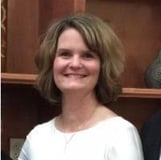
I once gave a cohort of student teachers each a magic wand as they approached their graduation. My colleague Maggie and I told the soon-to-be-teachers that their wand wasn’t a tool for summoning a fairy godmother to their respective new classrooms (although they were instructed to keep in touch). The wand was intended to serve as a reminder that there is no magic formula in teaching; however, there is a sound, scientific recipe for success, which they had already become very familiar with: the CLASS® tool.
Over the past several years, much of my work around teaching and learning at the University of Missouri-Kansas City has had something to do with CLASS. Whether it was teaching science methods or infant and toddler development course to pre-service teachers, conducting a research study measuring teacher-student interactions, or providing professional development to in-service teachers on effective teaching practices, you could bet that in one of my many bags, you would be able to reach in and find a CLASS Manual (or two—okay, three).
I consider CLASS to be a revolutionizing tool within the teacher education classroom. While using the CLASS Dimensions Guide as a supplementary course reading, the manual as a textbook, or an individual domain or dimension as a classroom observation look-for, I have observed beginning and graduate level teachers uncover the complex life and layers of the classroom. Discussions of theories central to teacher education have come alive through analysis with CLASS as the inquiry tool. On-line discussion boards have been transformed to a place where students share observations while using a common lens and vocabulary. Activity and lesson plans have become a template for prioritizing instructional support goals and pre-planning critical teaching practices to be enacted. This practice-based teaching approach (Vartuli, Snider and Holley, 2015) has fostered teacher development and centralized CLASS as a vehicle for teacher-learning and learning-to-teach.
CLASS is also a revolutionizing tool within the practicing teacher’s classroom. I now spend the majority of my time with in-service teachers in preschool through fifth-grade classrooms. CLASS's consistency, yet specialty, across ages and grade levels provides a common coaching framework. Several of the research projects conducted within our community (Rohs, Vartuli, & Kindle, 2014; Snider, 2015; Vartuli, Bolz & Wilson, 2014) have revealed that CLASS is an effective tool for improved teaching. As a researcher and coach, I have found that teachers are receptive to a coaching process with CLASS, as they can see their teaching and identify the teaching practices they want to intensify and master. For program leaders, they see the research-related benefits of CLASS scores in student outcomes.
From time to time, I still encounter that question, “Karrie, can’t you just tell me how to fix ___________ in my classroom?” (You fill in the blank.) Teachers don’t fix—we work diligently and relentlessly as inquirers—always striving to give the best support to students and each other. And still sometimes, we are searching for that one thing to be the magic wand. For coaches, researchers, and teacher educators, let’s continue to offer CLASS as the recipe toward revolutionary success.
Rohs, J., Vartuli, S., & Kindle, K. (2014). Teacher preparation with CLASS: Measuring candidates across levels. Federation of North Texas Universities Early Childhood Education Monograph, p. 1-8.
Snider, K. A. (2015). The relationship between in-service teachers’ culturally responsive self-efficacy beliefs and outcome expectancy belies, instructional practices (CLASS), and student outcomes in the urban school setting (Doctoral dissertation). Retrieved from Proquest. (3701209).
Vartuli, S., Snider, K., & Holley, M. (2015). Making it real: Practice-based early childhood teacher education program. Early Childhood Education Journal, 43(5), 1-14. DOI: 10.1007/s10643-015-0733-2.
Vartuli, S., Bolz, C., & Wilson, C. (2014). A learning combination: Coaching with CLASS and the project approach. Early Childhood Research and Practice, 16(1&2). Retrieved from http://ecrp.uiuc.edu/v16n1/vartuli.html.
 Karrie Snider, Ph.D., is a Research Associate for the University of Missouri-Kansas City Institute for Human Development where she enjoys supporting early childhood and youth program development, technical assistance, and evaluation. She has spent the past twenty years in the field of early childhood and elementary education as a classroom teacher, school administrator, teacher educator and researcher. Karrie is also an Affiliate Pre-K and K-3 CLASS Trainer.
Karrie Snider, Ph.D., is a Research Associate for the University of Missouri-Kansas City Institute for Human Development where she enjoys supporting early childhood and youth program development, technical assistance, and evaluation. She has spent the past twenty years in the field of early childhood and elementary education as a classroom teacher, school administrator, teacher educator and researcher. Karrie is also an Affiliate Pre-K and K-3 CLASS Trainer.
